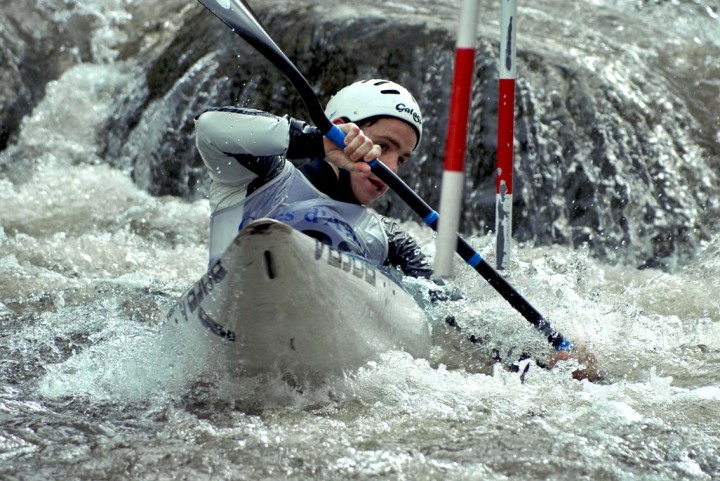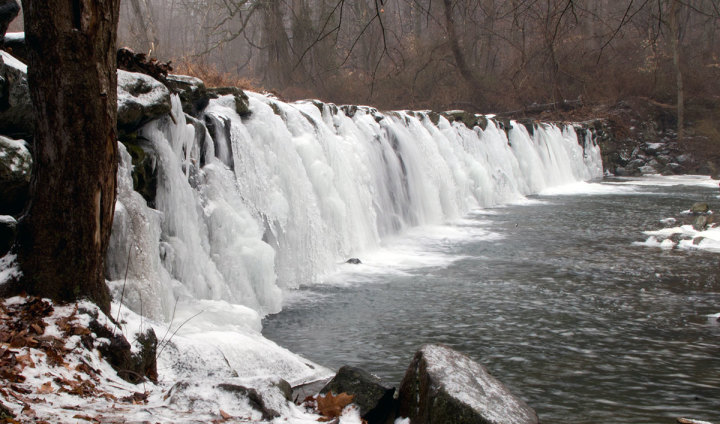Here you will find specifics of the kayaking wetsuits and info to help keep you warm in those cold rivers and lakes. For a general wetsuit info I still suggest you skim through our wetsuit guide here.
Why Are There Specific Kayaking Wetsuits?
There are two things to mention here. First is that while kayaking most of the time you are not in direct contact with the water. But you do get sprayed a lot. Only when you flip over you find yourself completely immersed in water. This means that you need a thinner wetsuit than someone who is constantly surrounded by water. The second thing is the motion of paddling. Any additional restrain that the protection that you wear puts on your shoulders and arms will make a difference when paddling.
A Typical Kayak Wetsuit Is a Long John
This is why a typical kayak wetsuit is a 3mm thick long john. Long johns are suits that cover you whole body except arms. This suit is sleeveless so your arms and shoulders a free to paddle and you won’t get neoprene rash (chaffing). If you flip over and the water is really cold long john is not the best thing to wear, but it is still much better than regular clothes. Because of exposed arms and because of large arm holes the protection of this suit is not the best and you can get flushed easily – meaning water will get inside your wetsuit. One more thing to mention – unlike with some other wetsuits here the zipper goes in front because it is easier to operate and you won’t be spending much time lying on your stomach so it would bother you.
When It Gets Really Cold You Need a Drysuit
A drysuit is a kayak suit that is completely 100% waterproof and sealed so absolutely no water will get in. This is achieved by a combination of waterproof fabric and latex neck, wrist and sometime ankle gaskets that stop the water from entering the suit. The suit itself is not warm, it just stops the water. That means that you can and should wear something dry and warm underneath. The main drawback of the drysuit is the high price as it can be 2-3 times more expensive than a wetsuit.
Still lost of paddlers use them as they are quite comfortable once you get used to them – they do not put much strain on your arms and shoulders.
A Drytop and Paddling Jacket
Lots of paddlers also use a paddling jacket or a drytop. This is a jacket that protects the upper body from wind, cold, and most of the water. The main difference between the two is that a drytop is almost like the upper half of the drysuit. It has latex gaskets to seal the wrists and neck. On the other hand a paddling jacket does not have these gaskets making it more comfortable to wear.Who uses what and when? If a kayaker is sealed in their kayak with a spray skirt and rolls up after a capsize, a drytop can keep them almost as dry as a dry suit. But if you have to swim water will get in at the waist. Kayakers usually wear them over the long john wetsuit.
Paddling jackets without gaskets are usefull if you know you are not going to flip and you are in a canoe or raft. If you are in a kayak wrist gaskets are a must. Why? Your arms are at a level where water can shoot inside of your sleeves and stay there.
What About Using a Surfing Wetsuit for Kayaking?
The main concern of kayakers when it comes to surfing wetsuits is the long sleeves and neoprene covering the shoulders. Of course it is easier to paddle without any neoprene restricting your movements but on the other hand – to paddle a surfboard out through breaking waves requires a much bigger arm motion than to paddle a kayak. And surfing wetsuits are made for this kind of motion. This is why they are used quite a lot in kayaking. They are also very comfortable and warm for their weight. They come in all sorts of thicknesses so warmth here is never an issue. You can get them anywhere from 6/5/4 with integrated hood to a simple thinner 3/2 or even a 2mm suit. It is up to you to decide at which thickness the wetsuit is too thick to paddle and you will get a drysuit.
BTW – surfers never wear drysuits, only regular thick neoprene suits, even in waters as low as freezing temperatures.
Brands
Companies that make kayak specific wetsuits include NRS, Neosport, Kokatat, Stohlquist, Camaro, etc… (please correct me if I am wrong?). As said, you can also check surfing brands: Rip Curl, Xcel, O’Neill, Billabong, etc…
Kayak Wetsuit Temperature Guide
American Canoe Association: cold water situation occurs when the water temperature drops below 60 degrees Fahrenheit (16 degrees Celsius) or when the combined air and water temperature is less than 120 degrees Fahrenheit (49 degrees Celsius).
Any comments are welcome.





